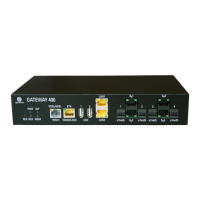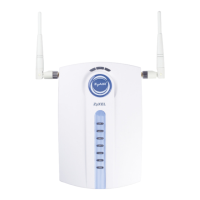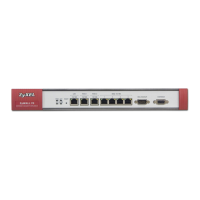Configuration | Gateway 400 User Guide
37
5.7.2.1 Settings
To set up port forwarding for a computer in your home network, click New. Any existing port for-
wardings will be displayed in an overview. To edit a port forwarding, click on the pencil icon at the
end of the overview. .
Address Type: Select the format of the IP address to create either an IPv4 or IPv6 address.
Applications: If you select the option VPN, Audio/Video, Application or Server, the services of-
fered in the drop-down list under Applications will be adjusted accordingly. Select
the desired service from the drop-down list and click Copy. This will enter the de-
fault settings for the Protocol and the port range under LAN Port and Public Port. If
the specified port range differs from the required port range, you can change it.
This rule applies to all computers in the local network: (only valid for IPv6) You can assign a port for-
warding rule to a specific computer or all computers in your local network.
Enable port forwarding on all ports: (only valid for IPv6) This option allows you to enable port for-
warding on all ports.
Automatically refresh provider prefix: (only valid for IPv6) If the computers on your local network
have IPv6 addresses, these consist of a local part and a provider prefix. This prefix is
assigned to you and can be updated automatically by the Gateway 400.
Computer: Enter the IP address of the network device in your home network (LAN). Use the for-
mat of the previously selected Address Type. If the address 0.0.0.0 (IPv4) or ::0 (IPv6)
is used, the rule applies to all connected network devices.
Verify that the IP address entered here is specified as a static IP address at the ap-
propriate computer.
Protocol: Select the transmission protocol from the Protocol drop-down menu. With the TCP
protocol, requests are constantly sent during data transmission to ensure that the
transmitted data information has been received successfully. Information that is
lost is resent.
With the UDP protocol, the data information is sent continuously. No check is per-
formed to verify that the received data information is either complete or error-free.
LAN Port: Port number(s) or port range to/from the LAN. Possible values:
Port Range: e.g., 100-150
Multiple Ports: e.g., 25,110,80
Combination: e.g., 25-100,80
Public Port: Port number(s) or port range to/from the Internet or the WAN. Possible values:
Port Range: e.g., 100-150
Multiple Ports: e.g. 25,110,80
Combination: e.g., 25-100,80
External Computer: Enter the IP address of the network device in the external network (Internet/
WAN). Use the format of the previously selected Address Type. If the address 0.0.0.0
(IPv4) or ::0 (IPv6) is used, the rule applies to all external network addresses.
Source Zone: Select the source of the packets (e.g., Internet or provider network).
Status: Select this check box to enable the rule.
Click Save to confirm your settings and return to the Port Forwarding (Port Mapping) screen dialog.
The port mapping list contains all configured port forwardings. All rules for which the Status option
is set are marked with in the Status column; rules that are not enabled yet are marked with .
To apply the enabled rules you, set the option Activate port forwarding for the following services.
On clicking Save, all rules with the Status are enabled.

